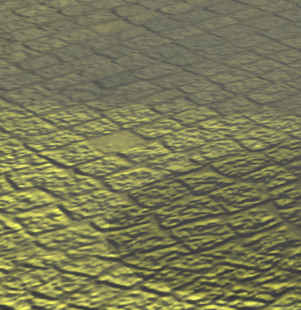Bump Mapping
Bump Mapping is a technique used to make surface look more realisitc by adding irregularities to them like bumps, scratches and so on. While the aim in using the technique is similar to the use of Displacement Mapping, Bump Mapping does not alter the geometry of an object. It relies on pertubing the face normal at every point on the surface, for which a color must be computed, resulting in brighter and darker areas on the surface.
